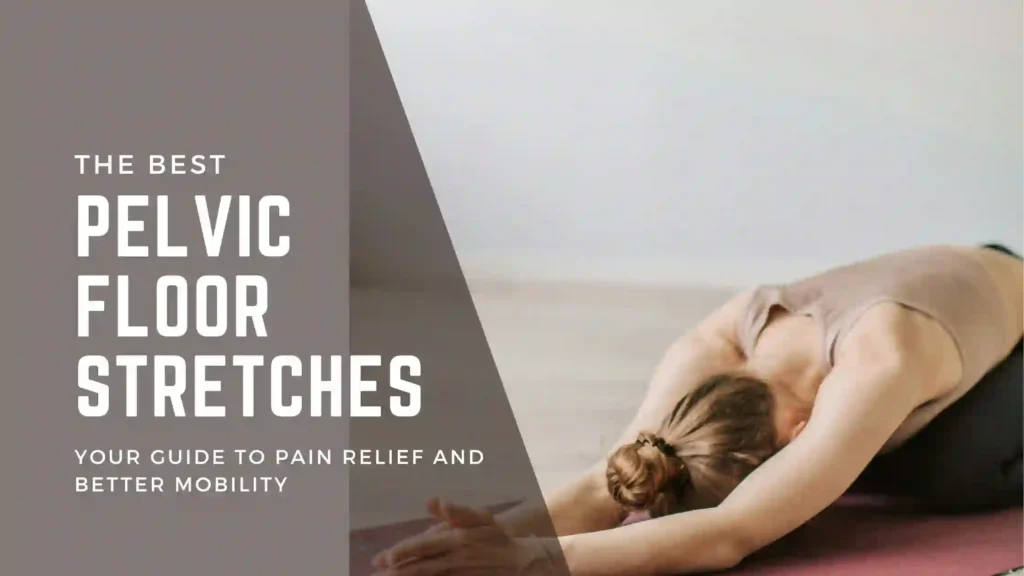Whether you’re a new mom navigating postpartum recovery, a fitness enthusiast, or someone looking to increase your overall well-being, understanding and practicing pelvic floor stretches can significantly improve your health. In this comprehensive guide, we’ll explore everything you need to know about pelvic floor stretches, their benefits, and how to incorporate them into your daily routine.
What is the Pelvic Floor?
The pelvic floor is a group of muscles and ligaments located at the base of your pelvis. These muscles play a crucial role in supporting vital organs such as:
- The bladder
- The bowel
- The uterus (in women)
These muscles are essential for:
- Bladder and bowel control
- Sexual function
- Core stability
A tight or weak pelvic floor can lead to discomfort, incontinence, and pain. Fortunately, regular pelvic floor stretches can help maintain or restore its function.
Why Are Pelvic Floor Stretches Important?
Pelvic floor stretches are essential for maintaining a balance between strength and flexibility. Here’s why they matter:
- Improve Bladder and Bowel Control: Reduces issues like incontinence.
- Reduce Pain and Tension: Alleviates pelvic and back pain.
- Enhance Core Stability: Promotes better posture and reduces injury risk.
- Support During Pregnancy and Postpartum: Helps manage physical changes and aids recovery.
Common Signs You Need Pelvic Floor Stretches
You may benefithu8 if you experience:
- Frequent or sudden urges to urinate.
- Difficulty controlling bowel movements or gas.
- Pain during sex.
- Lower back or pelvic pain.
- A sensation of heaviness in the pelvic area.
Best Pelvic Floor Stretches for Beginners
Starting with beginner-friendly stretches can help you ease into a pelvic floor routine. Here are some options:
1. Child’s Pose
- Kneel on the floor and sit back on your heels.
- Stretch your arms forward and lower your chest to the floor.
- Hold for 30 seconds, breathing deeply.
2. Deep Squats
- Stand with your feet slightly wider than hip-width apart.
- Lower yourself into a deep squat.
- Hold for 15–30 seconds, then return to standing.
3. Happy Baby Pose
- Lie on your back and bring your knees toward your chest.
- Hold the outer edges of your feet with your hands.
- Gently pull your knees toward the floor.
4. Butterfly Stretch
- Sit with the soles of your feet pressed together.
- Gently press your knees toward the floor.
- Hold for 20–30 seconds.
5. Pelvic Tilts
- Lie on your back with your knees bent and feet flat on the floor.
- Tilt your pelvis upward, engaging your core.
- Lower back down and repeat for 10–15 reps.
Advanced Pelvic Floor Stretches for Strength and Flexibility
Once you’ve mastered the basics, progress to these advanced stretches:
1. Bridge Pose
- Lie on your back with knees bent and feet hip-width apart.
- Press through your heels to lift your hips.
- Hold for 5 seconds, then lower. Repeat for 10–15 reps.
2. Pigeon Pose
- Start in a downward-facing dog position.
- Bring one knee forward, resting it behind your hands.
- Extend the other leg straight back and lower your hips.
- Hold for 30 seconds, then switch sides.
3. Lunging Hip Flexor Stretch
- Step one foot forward into a lunge position.
- Lower your back knee to the floor.
- Push your hips forward. Hold for 20–30 seconds.
4. Seated Forward Fold
- Sit with your legs extended in front of you.
- Hinge at your hips and reach for your feet.
- Hold for 30 seconds, breathing deeply.
Tips for Performing Pelvic Floor Stretches Safely
- Breathe Properly: Use deep, diaphragmatic breathing during stretches.
- Listen to Your Body: Avoid forcing movements that cause pain.
- Be Consistent: Aim to stretch 3–4 times weekly for the best results.
When to Consult a Professional
If you experience persistent pelvic pain, incontinence, or difficulty performing these stretches, consult a pelvic floor physical therapist or healthcare provider. They can create a personalized plan to meet your specific needs.
Final Thought
Incorporating pelvic floor stretches into your routine is a simple yet powerful way to support your health. Whether your goal is to ease discomfort, improve bladder control, or enhance core stability, these exercises can help. Start today and take the first step toward a stronger, healthier pelvic floor!
